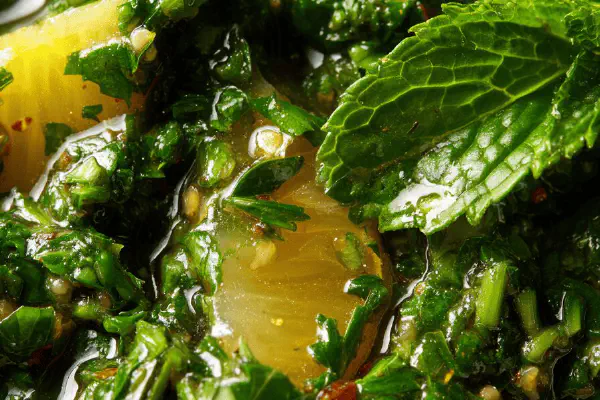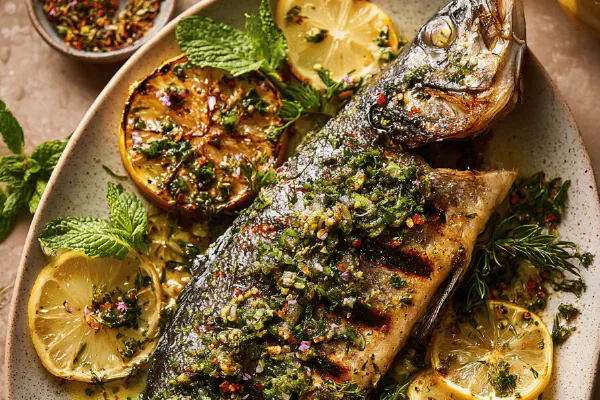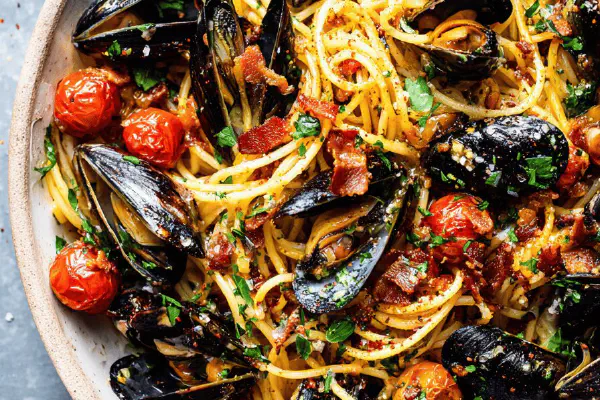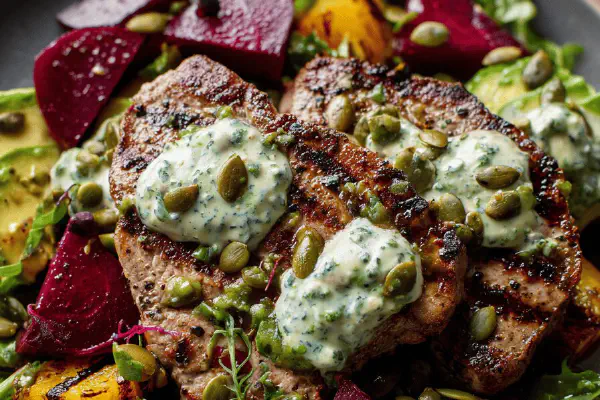Parsley Vierge Sauce Remix
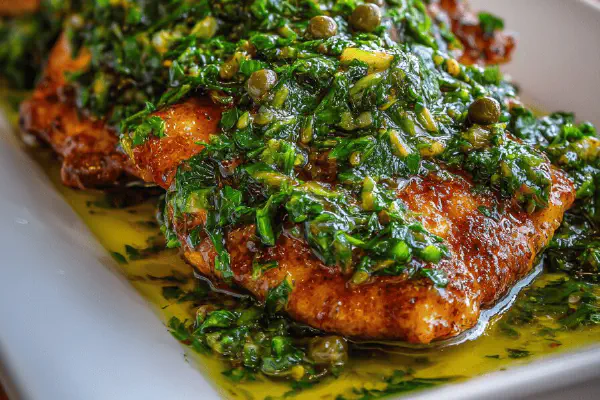
By Emma
Certified Culinary Professional
Ingredients
- 65 g (2 1/4 cups) fresh flat-leaf parsley, including stems
- 12 g (1/4 cup) roughly chopped cilantro leaves, replacing fennel fronds
- 3 green onions, cut into chunks
- 1 garlic clove, halved
- 1 lemon, finely grated zest
- 30 ml (2 tbsp) lemon juice
- 5 ml (1 tsp) Tabasco sauce
- 3 ml (1/2 tsp) honey, adjust for balance
- 50 ml (about 3 1/3 tbsp) extra virgin olive oil
- 5 ml (1 tsp) capers, coarsely chopped
- Salt and freshly ground black pepper
About the ingredients
Method
- Dump parsley, cilantro, green onions, and garlic into food processor. Pulse in short bursts. Don’t blitz into paste; still want texture. Keeps sauce alive • Stop, scrape sides once or twice to avoid uneven chop.
- Add lemon zest and juice, Tabasco, and honey. Pulse a few more times until mixture looks thick but not a puree. Remember, this should look fresh and chunky not a paste.
- Transfer to bowl. Pour oil slowly while stirring with a spoon to emulsify loosely—not thick, just mixed.
- Fold in chopped capers last. Season with salt and pepper. Taste. Sometimes more acid needed, add lemon juice. Or honey to tame sharpness.
- Rest 10 minutes if you can. Flavors marry better. If rushed, serve at once. I’ve used this on grilled pork, fish, shrimp—never disappoints.
Cooking tips
Chef's notes
- 💡 Pulse herbs and aromatics briefly in food processor. Stop before paste forms. Texture depends on timing. Scrape bowl often to ensure even chop. Small bursts avoid mush. Chunky bits carry fresh flavor better than smooth purees.
- 💡 Add lemon zest and juice after chopping herbs. The zest lifts aroma; juice hits tartness. Adjust acidity after taste test. Honey balances sharpness, but add little at first. Tabasco for heat. Layering rather than mixing all at once keeps flavors distinct.
- 💡 Slowly drizzle olive oil off the blade while stirring to emulsify lightly, not heavy mayo texture. Oil binds but keep sauce pourable. Over emulsifying dulls brightness and rough texture hunters want in parsley vierge style sauces.
- 💡 Fold in capers at end to keep crunch. Capers give salty, briny bursts not lost if added last. Chop roughly. Alternative: chopped green olives or small anchovy bits fiddle with flavor depth. Salt last since capers add saltiness; taste throughout.
- 💡 Rest sauce 10 minutes at room temp if possible. Herbs release aroma better. Don’t rush. Flavors marry without losing crunch or freshness. Refrigerate covered max two days. Leftovers thin out; whisk in lemon juice or oil if separation occurs.
Common questions
How long to pulse herbs?
Very short bursts. Stop as soon as herbs chopped evenly but still chunked. Overprocessing makes paste, loses fresh texture. Scrape sides to catch all bits. Important for mouthfeel.
Can I swap cilantro back to fennel fronds?
Yes. Fennel adds anise aroma, cilantro fresher, brighter. Basil works too for different notes. Herb swaps shift complexity. Try and see which side you prefer.
Sauce too watery or separated?
Usually overprocessing or wet herbs. Dry herbs before chopping. If watery, drain caper brine or add chopped fresh herbs to tighten. Whisk a bit more oil or lemon juice to bring back cohesion.
How to store leftovers?
Covered in fridge max two days. Herbs fade quickly. Keep cold but not frozen. Stir before serving. Avoid metal lids touching sauce; plastic wrap or ceramic is best. Consume fast for best bite and aroma.
